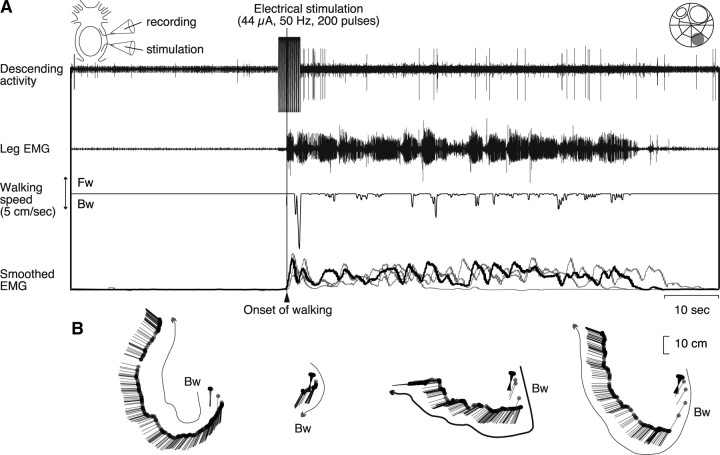Figure 8.
Electrical stimulation of a descending unit associated with reflexively evoked walking. We confirmed that the animal showed walking behavior when a small bundle (shown at the top right), which contained a descending unit activated in the stimulus evoked walking, was stimulated electrically. This walking was similar to that observed in the natural walking, which was evoked reflexively by mechanical stimulation of the telson, but was different from that observed in the spontaneous walking. The experimental setup is schematically illustrated at the top left. A, Effects of electrical stimulation on the leg muscle activity and animal behaviors. The stimulus artifact in the rostral cut end recording (top trace) indicates the onset and offset time of the stimulus (200 pulses of 0.2 ms duration at 50 Hz, 44 μA). The stimulation first caused a fast phasic increase followed by rhythmical bursts in the EMG activity recorded from the mero-carpopodite muscle of the second right leg (second trace). Leg movements resulted from the muscle activity were recorded as the movements of the treadmill sphere (third trace). Downward deflection indicates backward walking. At the bottom are superimposed all four EMGs (gray and black traces) that were integrated electronically with the time constant of 1 s, including the one corresponding to the raw record shown in the second trace (black trace). All records were obtained by stimulation of the same bundle. B, Movements of the animal body reconstructed from the treadmill sphere movements. The curved arrows indicate the walking direction in each stimulation. The bold one corresponds to the experiment shown in A. Abbreviations are the same as in Figure 1.

